What is the difference between inpatient and residential rehab programs?
Understanding the Key Differences in Alcohol and Drug Treatment Options
Table of Contents
Navigating Treatment Choices in Addiction Recovery
When seeking help for substance use or mental health concerns, understanding the distinctions between inpatient and residential rehab programs is crucial. Both approaches offer live-in support but differ significantly in environment, duration, intensity, and treatment focus. This article explores these differences to help individuals and families make informed decisions, emphasizing the importance of tailored treatment plans for effective recovery.
Core Concepts of Inpatient and Residential Rehab Programs
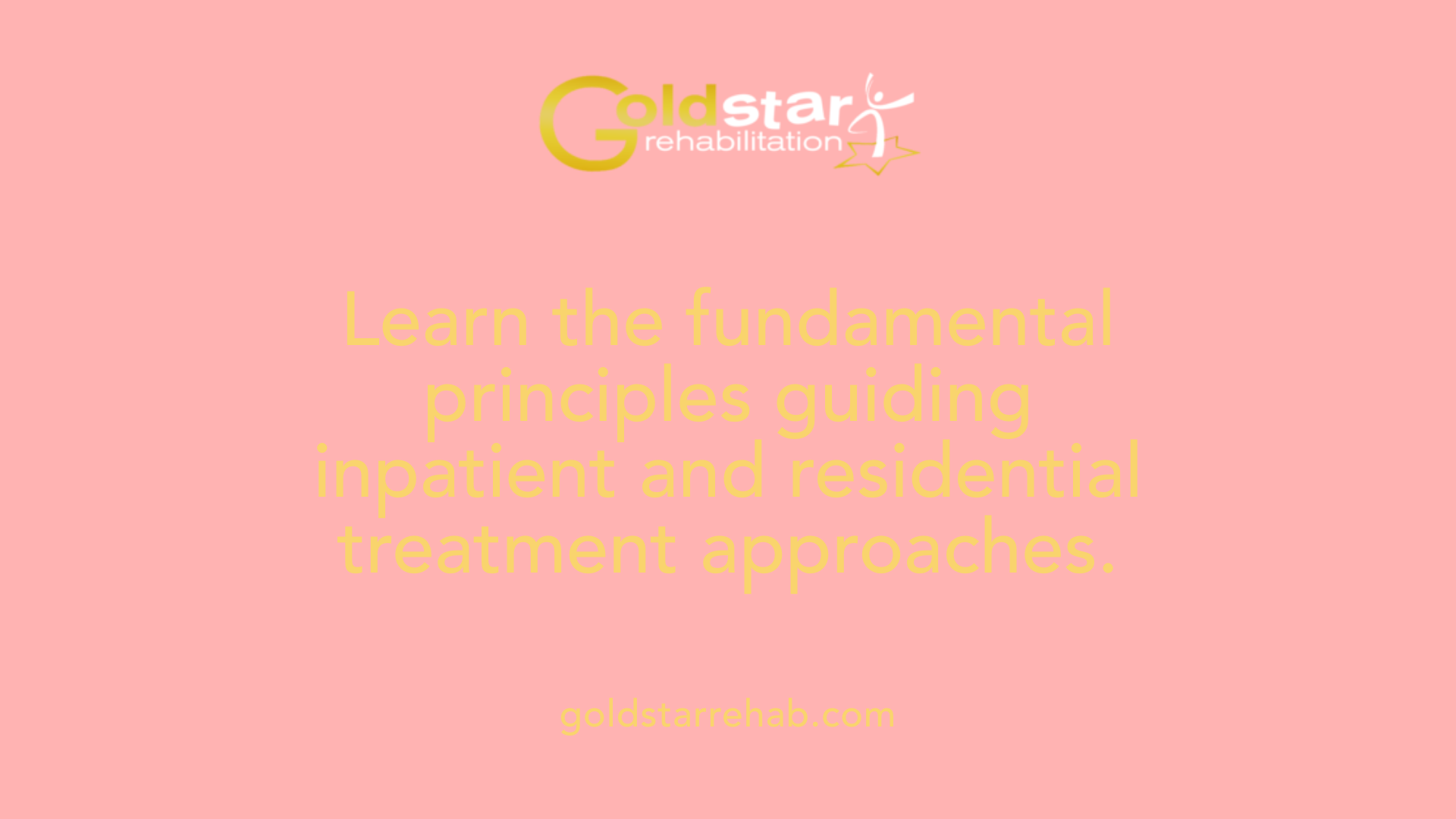
What are the core concepts of inpatient and residential rehab programs?
Inpatient and residential rehab programs are designed to offer a safe, structured environment where individuals battling substance use or mental health issues can access comprehensive care and support. While they share common goals, their approaches and settings differ significantly.
Inpatient rehab, often hospital-based, provides intense, medical supervision for individuals in crisis or with severe symptoms. Typically lasting from 30 days up to six months, inpatient programs focus on immediate stabilization, detoxification, and intensive therapy. The environment is clinical, with 24/7 medical oversight, medication management, and crisis intervention, making it suitable for those with high-risk conditions requiring constant care.
Residential rehab, on the other hand, tends to be more home-like and less medically invasive. These programs emphasize long-term recovery, skill development, and holistic healing. Lasting from several weeks to a year, residential programs focus on counseling, therapeutic modalities such as cognitive-behavioral therapy, and skills training. They create a supportive community environment that helps individuals address underlying causes of their issues, rebuild life skills, and prepare for reintegration into society.
Both types of programs aim to reduce substance use, prevent relapse, and foster recovery. Inpatient care is more acute and focused on immediate needs, particularly during detox or mental health crises. Residential treatment offers a more relaxed, ongoing support system geared toward addressing deeper emotional and behavioral issues.
Overall, these programs serve individuals with complex or severe conditions who benefit from immersive, structured treatment. They complement each other by providing different levels of intensity and focus, tailored to the individual's specific recovery journey. Whether short-term or long-term, both inpatient and residential settings are vital in guiding individuals toward sustained health and stability.
Differences Between Inpatient and Residential Rehab Settings
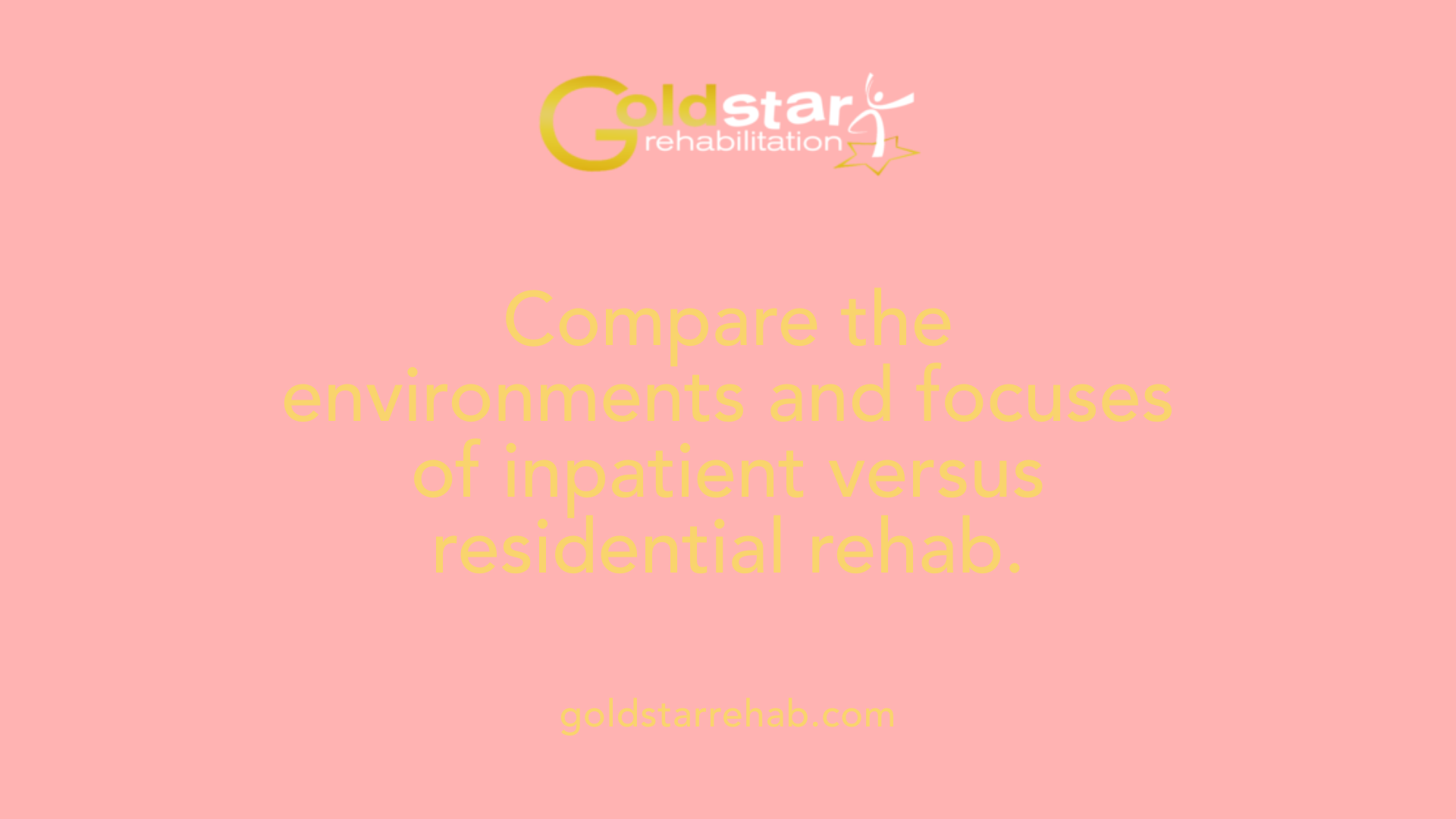
What are the differences between inpatient and residential rehab settings?
Inpatient rehab involves residing in a hospital-like environment for a short-term, intensive treatment period. This setting typically lasts from a few days up to three months but can sometimes extend longer. It is highly structured, with continuous medical oversight provided by healthcare professionals. The primary goal is stabilization—handling severe symptoms, detoxification, or managing crises such as overdose risks or acute mental health issues.
Residential rehab, in contrast, offers a more relaxed, home-like environment that supports long-term recovery. These programs usually last from several weeks to a year, focusing on healing through a structured schedule of therapies, education, and skill development. Unlike inpatient care, residential programs do not necessarily require 24/7 medical supervision but provide ongoing support, peer interactions, and a community setting conducive to behavioral change.
The core distinction lies in their environment and intensity. Inpatient programs are more clinical, fast-paced, and aimed at immediate stabilization, making them suitable for individuals with severe conditions or recent crises. Residential treatments serve those who are relatively more stable but still need a structured environment to address root causes of addiction or mental health disorders, and to prepare for reintegration into daily life.
In summary, inpatient care offers a short-term, medically intensive approach focused on crisis management, while residential rehab emphasizes a longer-term, holistic recovery process in a less restrictive environment. Both serve vital roles, but their suitability depends on the severity of the individual's condition and specific treatment needs.
Scope and Typical Duration of Treatment Programs
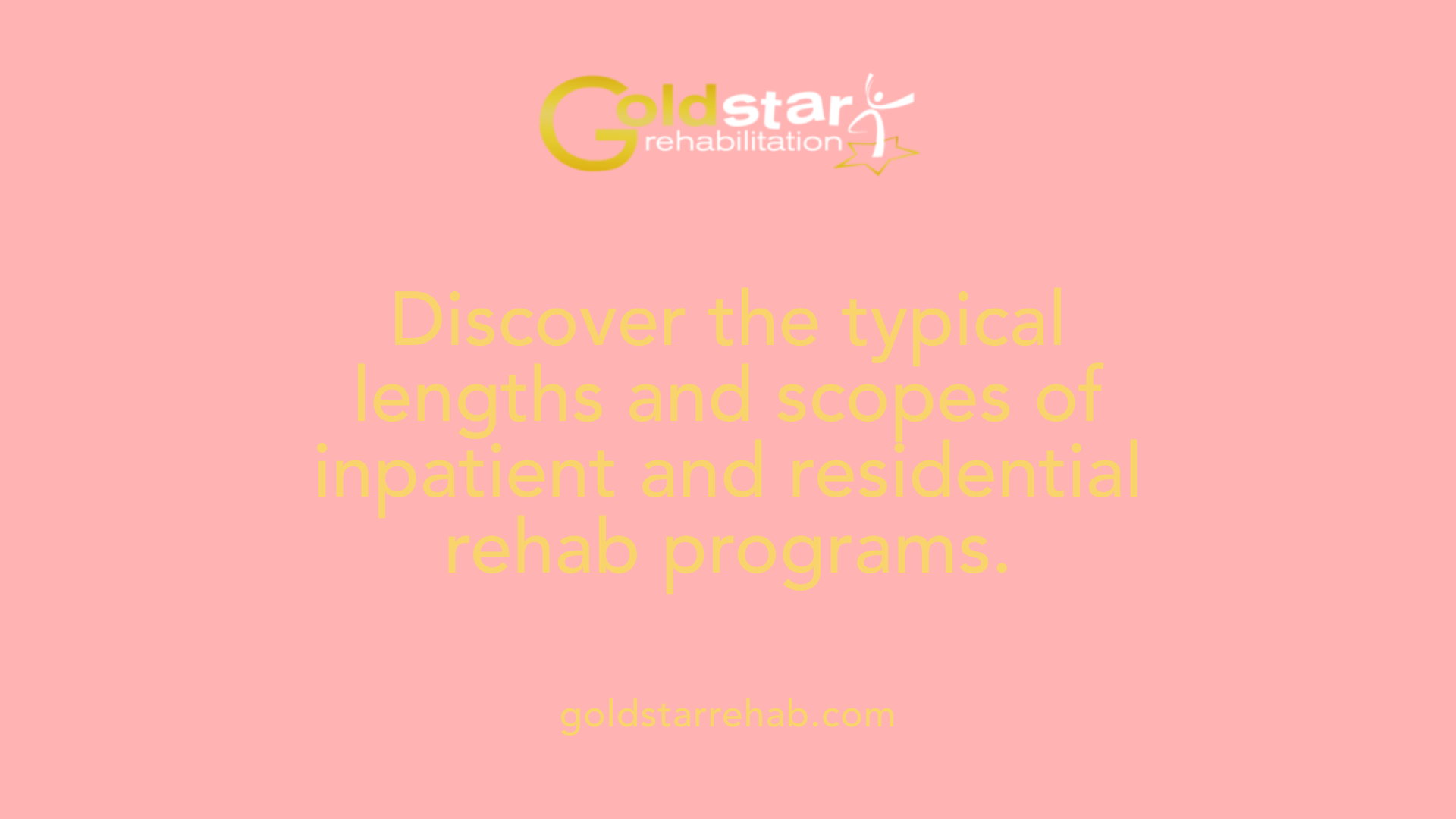
What is the scope and typical duration of inpatient and residential rehab programs?
Inpatient rehab programs usually last from just a few days up to about three months, with many lasting around 28 to 90 days. These programs are designed to provide immediate stabilization and intensive therapy for individuals experiencing severe substance use or mental health crises. They offer round-the-clock medical supervision, which is vital during detoxification and for managing acute symptoms.
Residential treatment programs tend to extend over a longer period, often ranging from 30 days to six months or more. Some programs are open-ended, lasting up to a year or longer, especially for individuals requiring comprehensive rehabilitation addressing emotional, behavioral, and social challenges. This longer duration allows for deeper therapeutic work, skill-building, and gradual reintegration into daily life.
The difference in scope and length is significant. Inpatient stays focus on rapid stabilization and crisis intervention, while residential programs aim for holistic, long-term recovery, offering a home-like environment with ongoing therapy, education, and support.
The choice between these types of programs depends on individual needs, including the severity of the condition, co-occurring disorders, support systems, and specific treatment goals. Longer stays in residential facilities have shown higher success rates, especially for complex cases, fostering sustained sobriety and psychological health.
Features and Characteristics of Inpatient and Residential Rehab
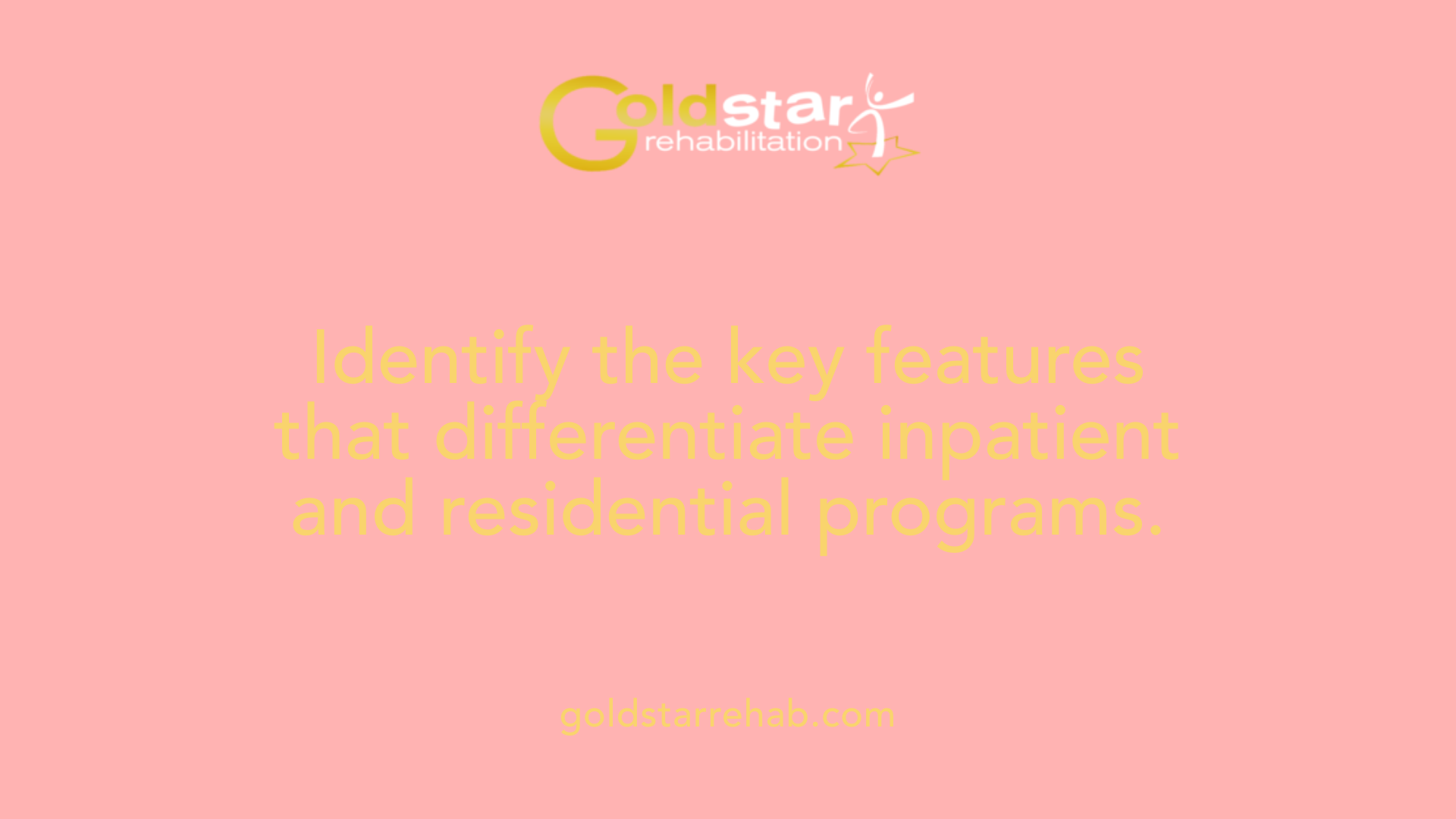
What are the features and characteristics that differentiate inpatient from residential rehab?
Inpatient rehabilitation is usually conducted in hospital or clinical settings, offering short-term, highly intensive care. Patients stay in the facility around the clock, receiving 24/7 medical supervision. This environment is designed to address severe or acute conditions, such as life-threatening substance withdrawal or mental health crises. The focus is on stabilizing symptoms quickly through medically managed detoxification, medication, and rigorous therapy sessions.
Residential rehab, however, involves individuals living within a supportive, community-based environment for a longer period. These programs typically last from 30 to 90 days or even longer in some cases. The setting emphasizes ongoing therapy, holistic care, and skill development while maintaining a homelike atmosphere that fosters comfort and community. Residents engage in individual and group therapies, educational activities, and relapse prevention strategies. The environment aims to promote long-term recovery and social reintegration.
The main distinctions lie in their objectives and environment. Inpatient care concentrates on crisis stabilization and immediate health risks, requiring stricter regulation and continuous medical oversight. Conversely, residential treatment provides a less restrictive, more relaxed setting that supports sustained behavioral change and personal growth.
When choosing between them, the decision often depends on the severity of the addiction or mental health issue. Severe cases with unstable symptoms typically benefit from inpatient hospital-based programs. Patients needing a supportive, structured environment for ongoing recovery are better suited for residential rehab, which addresses not only medical needs but also emotional, social, and behavioral healing.
In summary, inpatient rehab offers immediate, intensive medical intervention in a clinical setting, while residential programs focus on long-term, holistic recovery in a home-like environment. Both play crucial roles depending on individual needs and treatment goals.
Suitability for Different Needs and Populations

Which type of rehab program — inpatient or residential — is suitable for different needs or populations?
Inpatient rehab programs are primarily designed for individuals facing severe mental health challenges, complicated medical conditions, or addiction crises that demand continuous medical support and immediate intervention. These programs are typically short-term, focusing on crisis stabilization, detoxification, and acute symptom management. They are most appropriate for people experiencing life-threatening situations, such as overdose or dangerous withdrawal symptoms, or those with co-occurring mental health disorders requiring intensive psychiatric care.
Residential treatment, by contrast, is better suited for individuals who have stabilized from an immediate crisis and are prepared to focus on long-term recovery. It provides a supportive, home-like environment where patients can develop coping strategies, address underlying psychological or behavioral issues, and build social and life skills over several months. Residential programs are ideal for those seeking ongoing support, who might not need 24/7 medical supervision but benefit from a structured, therapy-rich setting.
The decision between inpatient and residential care hinges on several factors. Severity of the condition, medical risks, mental health stability, and personal motivation are crucial considerations. Many patients transition from inpatient to residential programs as part of a continuum of care, ensuring their needs are comprehensively addressed.
In summary, inpatient rehab is best suited for crisis cases requiring immediate stabilization, while residential rehab offers a more relaxed, long-term approach aimed at sustaining sobriety and mental wellness.
Search Query: Inpatient vs residential program suitability
Treatment Goals and Pathways in Rehab Programs
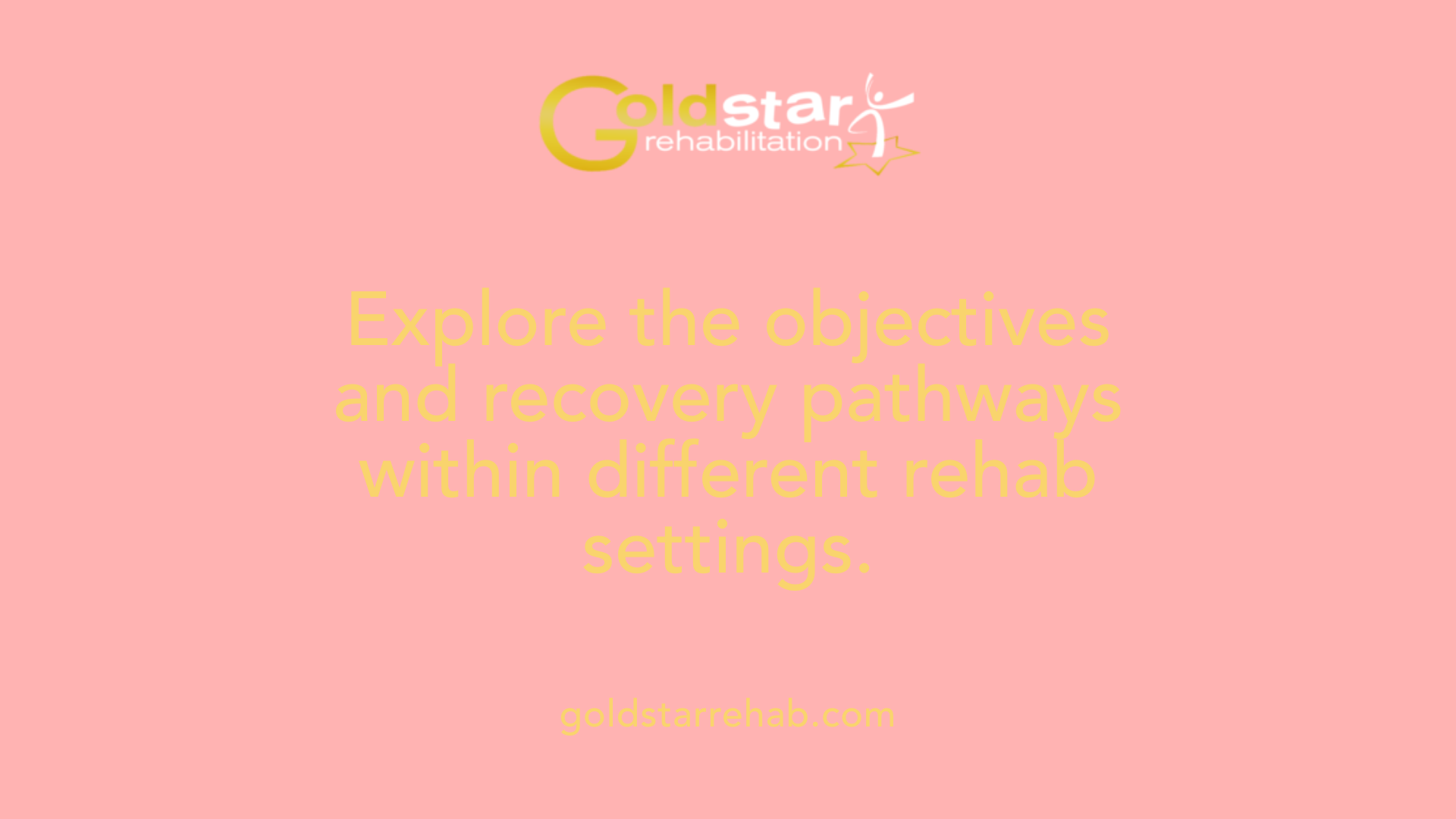
What are the treatment goals of inpatient and residential rehab programs?
Inpatient and residential rehab programs serve different stages and needs within the recovery process.
Inpatient care is designed for immediate stabilization. The primary goal is to address acute symptoms of mental health crises or severe substance use disorders. This involves intensive medical oversight, medication management, and psychiatric evaluation to ensure safety and effective detoxification if required. Patients in inpatient programs usually benefit from round-the-clock supervision, which helps manage withdrawal symptoms and provides immediate crisis intervention.
Residential treatment focuses on long-term recovery. Its main goal is to support emotional healing, develop coping skills, and prevent relapse over the extended course of treatment. These programs create a structured, supportive environment where individuals learn and practice life skills, participate in therapy sessions, and build social supports. The environment is more relaxed than hospital-like inpatient units, emphasizing healing and rehabilitation through continuous therapy, educational activities, and peer support.
How do the goals of inpatient and residential care differ?
While both care types aim to foster recovery, their specific objectives differ in scope.
Inpatient facilities focus on stabilization and immediate response to urgent health or safety concerns. They are often short-term, lasting from several days to a few weeks, with the goal of managing critical symptoms, initiating detox, and preparing individuals for the next phases of treatment.
Residential programs work on addressing the roots of addiction or mental health issues. Their longer duration—often several months—allows for deeper psychological work, skill-building, and lifestyle changes necessary for sustained recovery. These programs aim to prepare individuals to reintegrate into their community and sustain sobriety or mental health improvements independently.
What is the emphasis on stabilization versus recovery?
Stabilization in inpatient care concentrates on immediate safety, symptom management, and medical stabilization. It’s critical for individuals in crisis or experiencing severe withdrawal.
Recovery in residential settings emphasizes emotional well-being, resilience, and relapse prevention. The goal is to empower individuals with strategies, skills, and support networks that help them maintain their mental and physical health over the long term.
Both pathways are vital but serve different purposes in the continuum of care, with inpatient care often serving as the initial step and residential care as a step forward in the healing process.
Choosing the Right Path to Recovery
Understanding the differences between inpatient and residential rehab programs is vital for making an educated decision about treatment options. Inpatient programs are best suited for urgent, severe cases requiring immediate medical attention and stabilization, often involving detoxification and crisis intervention. Residential rehab offers a longer-term, holistic approach, focusing on skill-building, emotional recovery, and community reintegration. The decision should be guided by the individual's specific needs, severity of condition, support system, and treatment goals, ideally in collaboration with healthcare professionals. Regardless of choice, the ultimate goal remains the same: to support lasting recovery, improve mental and physical health, and enhance quality of life.
References
- National Helpline for Mental Health, Drug, Alcohol Issues - SAMHSA
- Types of Teen Mental Health Treatment Explained - Newport Academy
- Residential vs. Inpatient Treatment: What's the Difference?
- Inpatient Vs. Outpatient Rehab - Addiction Center
- Residential vs Inpatient Mental Health Treatment - Friends Hospital
- Inpatient vs Residential Treatment - Northpoint Colorado
- Residential vs Inpatient Treatment | Serenity Grove
- VA Mental Health Residential Rehabilitation Treatment
.png)








%20(1).jpg)




.jpg)





.jpg)

.jpg)











